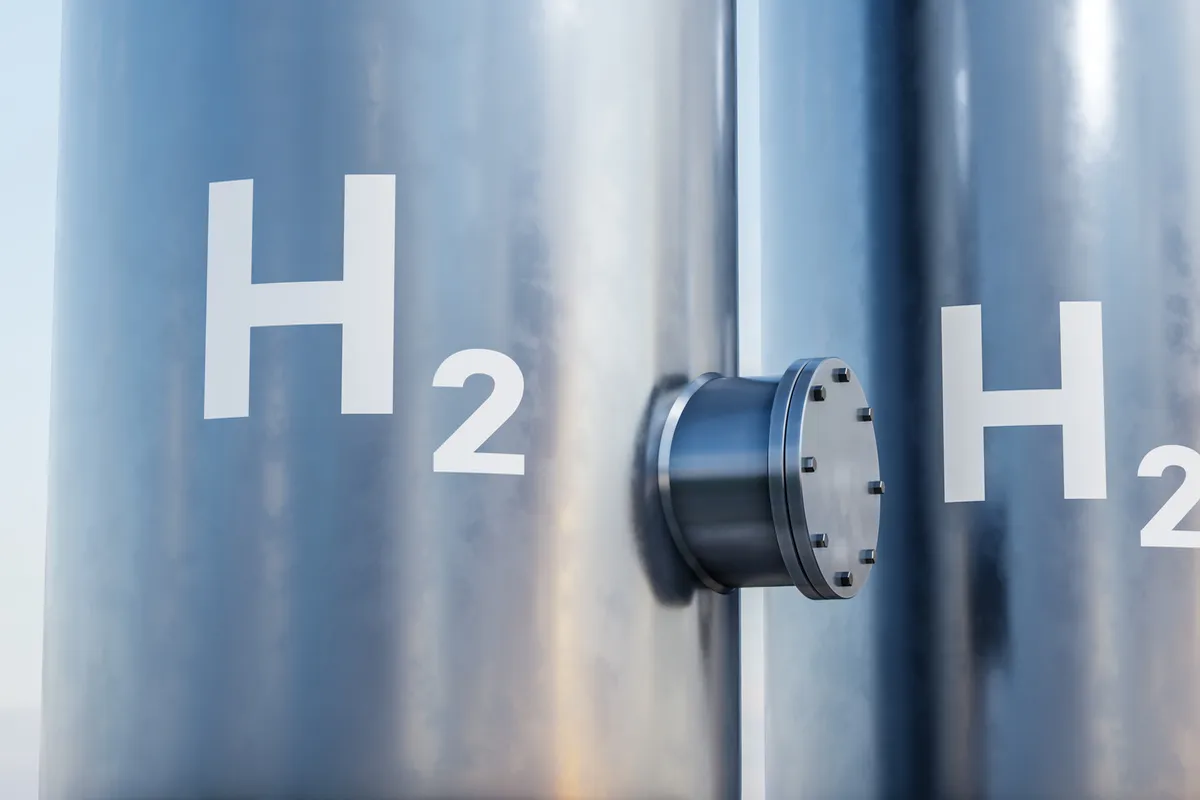Welcome, dear readers! Today, we’re going to talk about something that has been gaining a lot of attention lately: the hydrogen economy. You might have heard about hydrogen as a clean energy alternative that could help us reduce greenhouse gas emissions, fight climate change, and improve energy security. But have you ever wondered how much water a hydrogen economy would use? Let’s dive into this fascinating topic and find out!
A hydrogen economy would consume about 5.63-11.25 trillion liters of water annually in 2050 depending on the method used for its production. This estimate is based on an annual total energy demand of 750 EJ in 2050 where hydrogen accounts for 20% of this demand. The detailed calculation is presented in the section below.
Understanding the hydrogen production process
To start, let’s take a look at how hydrogen is produced. There are two main methods: electrolysis and steam methane reforming [1]. In electrolysis, water is split into hydrogen and oxygen using electricity. This process is appealing because it can be powered by renewable energy sources, making it a truly clean option. On the other hand, steam methane reforming involves reacting natural gas with high-temperature steam to produce hydrogen. Although this method is more common, it does release carbon dioxide, making it less environmentally friendly.
Water consumption in a hydrogen economy
Now that we understand the production processes, let’s explore the water consumption in a hydrogen economy. Estimating the exact amount of water needed for large-scale hydrogen production isn’t straightforward, as it depends on several factors like the production method, efficiency, and scale. Furthermore, regional variations in water availability can also influence the overall impact of hydrogen production on water resources.
Calculating water needs for a hydrogen economy in 2050
To provide a concrete perspective on the water needs of a hydrogen economy, let’s try to estimate the amount of water required based on projected total energy needs in 2050. According to the U.S. Energy Information Administration (EIA), global energy demand is expected to increase by 50% by 2050 [2]. Let’s assume that hydrogen will account for 20% of this demand [3]. We’ll consider two scenarios for hydrogen production: using renewable energy for electrolysis and steam methane reforming.
For simplicity, let’s use the following assumptions:
- Total energy demand in 2050: 750 EJ (exajoules) [4]
- Hydrogen’s share of energy demand: 20%
- Water consumption for electrolysis: 9 liters of water per kg of hydrogen [5]
- Water consumption for steam methane reforming: 4.5 liters of water per kg of hydrogen [6]
- Energy content of hydrogen: 120 MJ (megajoules) per kg [7]
Now, let’s calculate the water needs for each scenario:
Scenario 1: Renewable energy for electrolysis
- Hydrogen energy demand: 150 EJ (20% of 750 EJ)
- Hydrogen production: 1.25 trillion kg (150 EJ / 120 MJ per kg)
- Water consumption: 11.25 trillion liters (1.25 trillion kg x 9 liters per kg)
Scenario 2: Steam methane reforming
- Hydrogen energy demand: 150 EJ (20% of 750 EJ)
- Hydrogen production: 1.25 trillion kg (150 EJ / 120 MJ per kg)
- Water consumption: 5.63 trillion liters (1.25 trillion kg x 4.5 liters per kg)
As we can see from the calculations, using renewable energy for electrolysis would require roughly three times the amount of water compared to steam methane reforming. However, it’s important to note that renewable energy sources like wind and solar can provide clean and sustainable energy, which is crucial for reducing greenhouse gas emissions and mitigating climate change.
Here’s a table summarizing the calculations:
| Scenario | Hydrogen production (trillion kg) | Water consumption (trillion liters) |
|---|---|---|
| Renewable energy for electrolysis | 1.25 | 11.25 |
| Steam methane reforming | 1.25 | 5.63 |
These calculations highlight the potential impact of a hydrogen economy on water resources and the importance of pursuing sustainable production methods. While the numbers presented are estimates, they serve as a useful starting point for considering the water needs of a hydrogen economy.
It’s important to note that while the water consumption for hydrogen production may seem significant, it is relatively small compared to the globally available freshwater. According to the United Nations, the world’s freshwater resources amount to approximately 35 million km³ or 35 quintillion liters [8]. Even under the highest hydrogen production scenarios, the water consumption for electrolysis would only amount to a small fraction of the world’s freshwater resources. However, it’s essential to ensure that the water usage in the hydrogen economy is sustainable and responsible to prevent potential localized impacts on water availability and quality.

Strategies for reducing water usage in hydrogen production
As the hydrogen economy continues to develop, it’s important to find ways to minimize water usage. Technological advancements and innovations can help improve water efficiency in hydrogen production processes. For example, recycling and reusing water within the production process can greatly reduce the overall water consumption. Additionally, collaboration between government, industry, and research institutions is essential for developing and implementing sustainable water management strategies in the hydrogen economy.
Exploring alternative water sources for hydrogen production
Another way to address water consumption concerns is by exploring alternative water sources for hydrogen production. Seawater and wastewater are two potential options that could significantly reduce the pressure on freshwater resources. However, using these alternative sources presents its own set of challenges and limitations, such as the need for advanced filtration and desalination technologies. Ongoing research and development efforts are focused on overcoming these obstacles to make alternative water sources viable for large-scale hydrogen production.

Evaluating the overall feasibility of a hydrogen economy
When considering the feasibility of a hydrogen economy, it’s important to weigh the benefits of hydrogen as an energy source against concerns related to water consumption. While water usage is undoubtedly an important factor, we should also take into account the broader environmental and economic advantages that hydrogen can offer. By analyzing these factors together, we can determine if a hydrogen economy can be sustainable and viable in the long run.
The role of policy and regulation in water management
Government policies play a crucial role in promoting responsible water use and ensuring that the hydrogen economy develops sustainably. By learning from successful water management policies in other industries, governments can create a regulatory framework that encourages sustainable water usage in hydrogen production. This could involve setting efficiency standards, incentivizing water-saving technologies, and promoting collaboration between stakeholders.
Public awareness and engagement in a hydrogen economy
The success of a hydrogen economy will depend not only on technological advancements and policy support but also on public understanding and engagement. It’s essential for the public to be aware of the water usage implications in a hydrogen economy and participate in conversations around water resource management. By fostering dialogue and raising awareness, we can empower citizens to engage in water conservation efforts and support sustainable energy policies.

